Fascia and Pain
Posted by Kirby Strissel on May 26, 2022
You may come across the words fascia or myofascia when reading about muscles, stretching, exercises, or physical problems people experience in their day to day life. What is fascia exactly? Fascia can be defined as the connective tissue that creates a matrix between muscles, organs, bones and tendons.
I find it easiest to think of fascia like a spider web. A web is created amongst and connects various different objects. When a bug gets caught up in a portion of the web it will then create pull or strain on the various anchor points of the webbing and the web as a whole.
There are four types of fascia:
- The first is superficial fascia which is found right under the skin. Superficial fascia is thicker closer to the center of the body and thinner the further it gets away from the center.
- The second type is deep fascia which covers bones, muscles, nerves and blood vessels. There are two subclasses of the deep fascia, aponeurotic and epimysial. Aponeurotic fascia is thicker and separates more easily from muscles while epimysial fascia is thinner and more tightly connected to muscles.
- The third type of fascia is visceral fascia which is found around certain organs (lungs, heart, stomach, etc.) that are in the body’s open spaces.
- The final type of fascia is parietal fascia which lines the body cavity.
The term myofascia refers to fascial connective tissue related to the skeletal muscles. Myofascial problems can be caused by strain, direct injury to the tissue, lack of movement, post-surgery healing, repetitive movements or overuse. When one or more of the previous things happens the body can respond to it by forming fascial adhesions, restrictions or scars. If this happens enough it can lead to Myofascial Pain Syndrome.
There are some differences between muscular tension pain and myofascial pain. Muscular tension pain will get better over time while myofascial pain will get worse over time. While muscular and joint pain can worsen if you keep moving, fascial pain gets better with movement and heat therapy.
Treating fascial restrictions takes a combination of pressure and patience to separate stuck tissues and lengthen them. There are a few different schools of thought on the how and why the fascia releases when it is worked on:
- One idea is “gel-to-sol” where the sustained direct pressure will “melt” the extracellular ground substance from a more solid to a more fluid consistency allowing greater movement of the tissue. Another thought is a combination of pressure along with friction of the tissue will produce heat to maintain fluidity of the ground substance.
- An alternative to the “gel-to-sol” theory is that there is a sponge-like wringing and refilling of the tissue matrix. This idea is backed by nuclear magnetic resonance imaging that shows water droplets can be seen emerging from the surface of tendons during stretching.
- The final idea is that the hydration changes from the sponge-like wringing are combined with skeletal muscle relaxation and that is what causes the positive change through the fascial network.
Regardless of which, if any, of the above ideas is correct we need to find ways of keeping our fascia healthy. How can we impact this?
- One of the easiest things to do for yourself is to move around throughout the day with a variety of movements. Our joints have a lot of potential range of motion that in a given day we probably are not taking full advantage of.
- Another is frequent stretching, especially of areas that are more prone to tightening up through the day.
- Finally, try to maintain good posture so the body does not create unnecessary strain from holding the body in a less than ideal position.
If you are experiencing fascial pain that is not going away here are some suggestions to try:
- One would be doing heat therapy such as a heating pad, steam room, sauna, a hot shower or hot tub to help warm and loosen the area.
- A dedicated yoga regimen can help open up areas of facial restrictions with consistent practice and time.
- The foam roller is a good tool to work on loosening and elongating restricted tissues at the gym or at home.
- Massage therapy is another powerful tool for breaking up fascial restrictions and loosening of the skeletal muscles.
If you would like to set up a massage to help loosen myofascial restrictions, or just to relax, you can contact the Activities Desk at (507) 287-9300. The RAC has 3 massage therapists on staff to help serve you.
REFERENCES:
Fraley, Aiyana. “The Massage Therapist’s Guide to Myofascial Release.” Massage Magazine, February 12, 2019, https://www.massagemag.com/guide-to-myofascial-release-115975/
Luchau, Til. “Understanding Fascial Change Continuity, Plasticity, and Sensitivity.” Associated Bodywork & Massage Professionals, May/June 2014, https://www.abmp.com/textonlymags/article.php?article=990
Walker, Brad. “Stretching and Muscle Fascia.” Stretch Coach, May 19, 2019. https://stretchcoach.com/articles/stretching-fascia/
“What Is Fascia.” WebMD, June 20, 2021. https://www.webmd.com/a-to-z-guides/what-is-fascia

Kirby Strissel
Kirby is Board Certified in Therapeutic Massage and Bodywork (BCTMB). He received his training at Sister Rosalind Gefre School of Professional Massage. Upon graduation in April 2004, he was hired on as a therapist. Kirby joined the RAC staff in January 2006 as a Massage Therapist.
Contact Kirby Strissel



